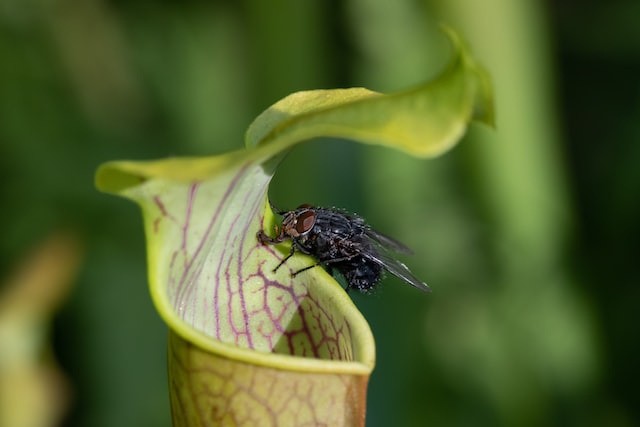Some carnivorous pitcher plants, known as Nepenthes, have shifted from capturing and digesting insects to ability to absorb animal poop for their own daily dose of nutrients, and it's a switch this is proving very beneficial.
Nepenthes absorbs poop

Scientists discovered that such botanical poop eaters consume more nitrogen due to diet adaptation than some other Nepenthes that eat prey.
Even though the new diet doesn't sound particularly appealing, the difference is significant, as per sciencealert.
The researchers studied six Nepenthes species and four hybrids in Malaysian Borneo, analyzing tissue samples to figure out how much of nitrogen and carbon captured from the environment.
According to Alastair Robinson, a botanist at the Royal Botanic Gardens Victoria in Australia, a few Nepenthes species have diverged away from carnivory and toward a diet of animal scats.
Nitrogen in crucial in photosynthesis as well as other plant processes, and the researchers discovered that the heavier 15N isotope of nitrogen had been significantly more abundant with in Nepenthes than in nearby non-carnivorous plants, particularly in the species which specialized in consuming mammal droppings.
Being carnivores allows plants to absorb important nutrients that they would not otherwise have from nitrogen-deficient soil.
With insect populations declining at higher elevations, this appears that some plants are seeking alternative sources of the element.
Foraging insects in most Nepenthes species fall into a trap of water and digestive fluids after slipping on the smooth surfaces and edges of pitcher leaves.
Some of the plants, as discovered in 2009, have developed a mutually beneficial interaction with mountain tree shrews: the animals deposit nitrogen-rich waste into the pitchers while feeding on carbohydrates on the plant lids.
Further investigation revealed a link between some Nepenthes species and summit rats, birds, and bats.
People now know that resource trades with animals are much more helpful in terms of nutrient capture than insect catching.
All of this new knowledge can help conservation efforts.
More Nepenthes species are endangered more than any other carnivorous plant genus, with 40% of its species currently classified as critically endangered, endangered, or vulnerable.
Properties of this carnivorous plant
Although some Nepenthes species are epiphytes, they are perennial herbaceous plants that flourish in very acidic soil, as per Britannica.
All of the species are carnivorous plants that catch insects and other prey with pitcher-shaped leaves that act as passive pitfall traps.
Attracted by nectar secreted from trap's lid, the prey frequently fall from pitcher's mouth into a pool of liquid at the bottom, being unable escape due to the pitcher's downward-pointing hairs and slick sides.
The animals eventually drown and are digested by enzymes. In poor soil conditions, carnivory provides nutrients, particularly nitrogen and phosphorus.
The flowers have no petals and produce minute seeds which are dispersed by the wind.
Nepenthes contribute Nitrogen pollution
Carnivorous plants have no negative environmental effects.
However, research indicated that nitrogen pollution in the atmosphere can have a negative impact on these plants, as per Island Ecology.
Carnivorous plants have evolved to thrive in low-nitrogen environments.
When carnivorous plants are exposed to high levels of nitrogen, they are unable to compete with the surrounding plants that thrive in those conditions.
Related Article: Bats and Poop-Eating Pitcher Plants: a Perfect Partnership
© 2025 NatureWorldNews.com All rights reserved. Do not reproduce without permission.

